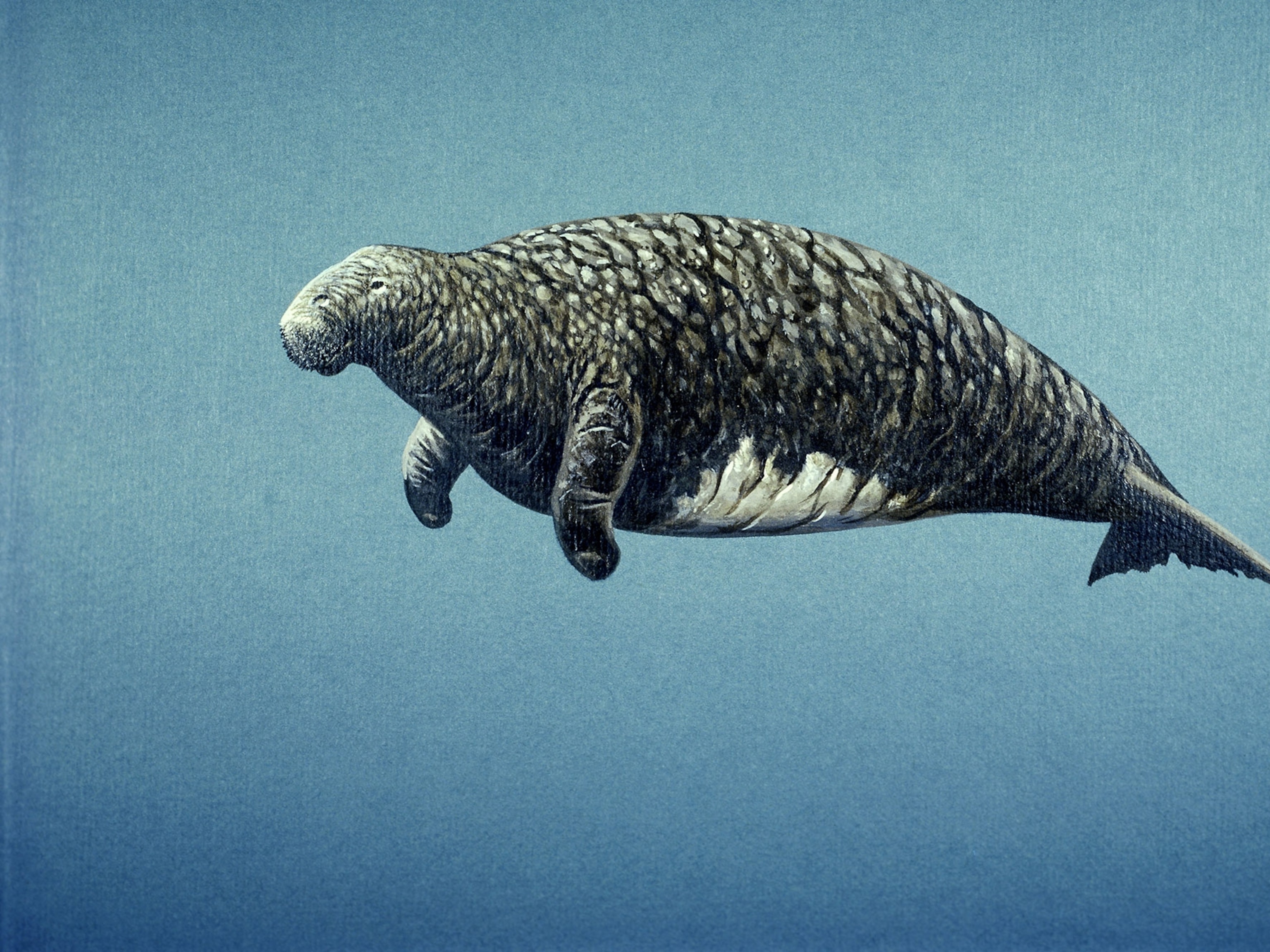
Sea Cow Baby Boom Is Good News for Great Barrier Reef
The slow-moving herbivores are rebounding in Australia thanks to an abundance of seagrass.
By John Pickrell
It’s rare to hear good news about Australia’s ailing Great Barrier Reef, but some of its larger animals are surviving against the odds.
Populations of dugongs—a relative of the manatee—have surged throughout the southern region of the coral reef, according to newly released aerial surveys, taken in November.
What's more, the rotund marine mammals seem to be experiencing a baby boom. Of the 5,500 animals counted, 10 percent were calves, says the Great Barrier Reef Marine Park Authority report.
The last survey, in 2011, had found no calves at all following a powerful cyclone that stripped away seagrass, the herbivores' favorite food. (See "3D-Printed Reefs Offer Hope in Coral Bleaching Crisis.")
Since then, seagrass meadows have recovered along the shorelines, and so have dugongs. Females require a lot of the nutritious plants to have their babies.
It's “excellent news for this species, which is listed as vulnerable to extinction by the International Union for Conservation of Nature,” report co-author Susan Sobtzick, a coastal and estuarine ecologist at James Cook University, says by email.
Storms Bad for Seagrass
The dugong, one of four species of sea cow in the order Sirenia, live throughout shallow waters of the Indo-Pacific. The world’s largest population resides in northern Australia, from Shark Bay in the west to Morton Bay in the east. (Also see "More Than 6,000 Manatees Spotted in Florida—A Record.")
Historically, the slow-moving animals were easy targets for hunters, but their biggest threats today are coastal development and loss of seagrass meadows, as well as the risk of entanglement in fishing nets and shark nets, which protect some Australian bathing beaches.
Nine months after Cyclone Yasi barrelled through in 2011, "the estimated size of the dugong population was the lowest since surveys began in 1986,” Sobtzick says. Scientists found fewer than 600 animals; 187 were dead or dying, stranded along the coast.
Extensive flooding in the wake of Yasi flushed sediments into the ocean, likely killing the seagrass.
Janet Lanyon, an expert on dugongs at the University of Queensland not involved in the new report, adds that "seagrasses are low in nutrients and energy, and dugongs need to eat a lot to maintain body condition."
"The future for dugongs is not good if we keep having these severe rainfall and coastal flood events," Lanyon says. "If climate change results in more frequent severe weather, then dugong populations will undoubtedly suffer."
It's unknown whether rapidly warming seas, which have caused huge swaths of coral to bleach and die in the Great Barrier Reef, have a harmful effect on dugongs, experts say.
Cautious Celebration
An uptick in baby dugongs is a “huge reason to celebrate,” says Tooni Mahto, senior marine campaigner at the nonprofit Australian Marine Conservation Society in Brisbane.
But she also urged caution.
"The dugong population up there is still only at about 3 to 5 percent of historical numbers," says Mahto, who was not involved in the new report.
Dugongs have been hit hard by development in southern Queensland; for instance, shark-proof nets installed around beaches have entangled some dugongs, causing them to drown, Mahto says.
“Because dugongs have such a slow recovery rate—they don’t produce many offspring—some of the increase in the southern population must be because of immigration from farther north,” Mahto adds.
“So, I don’t think the results are saying the dugong population is exploding in the southern area, they are saying they have increased from a previously disastrous survey season.”
The report authors agree that dugong populations shift as the animals migrate in search of lusher seagrass, but it's still encouraging that the returning plants have boosted their numbers.
Follow John Pickrell on Twitter.





